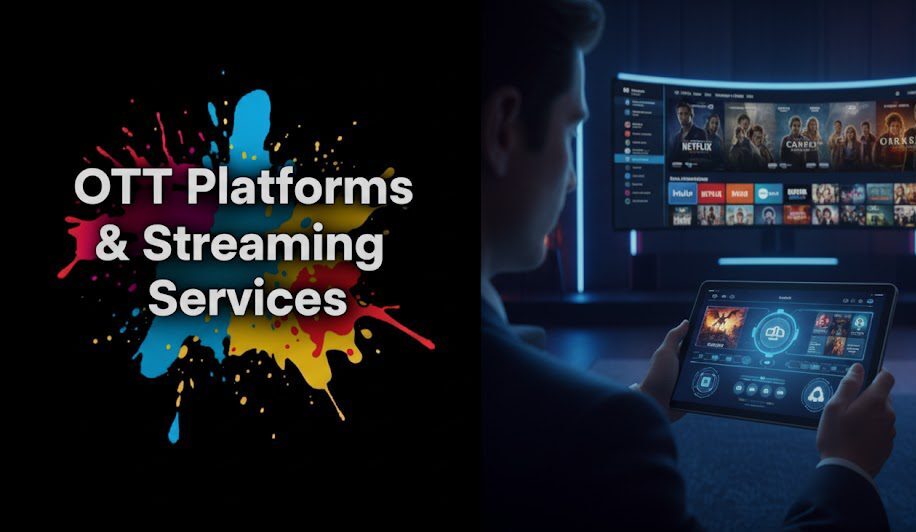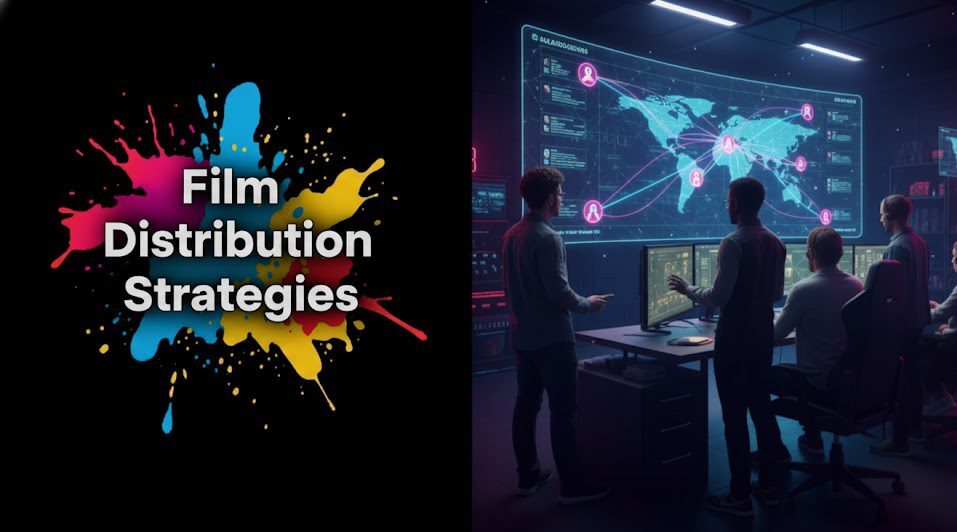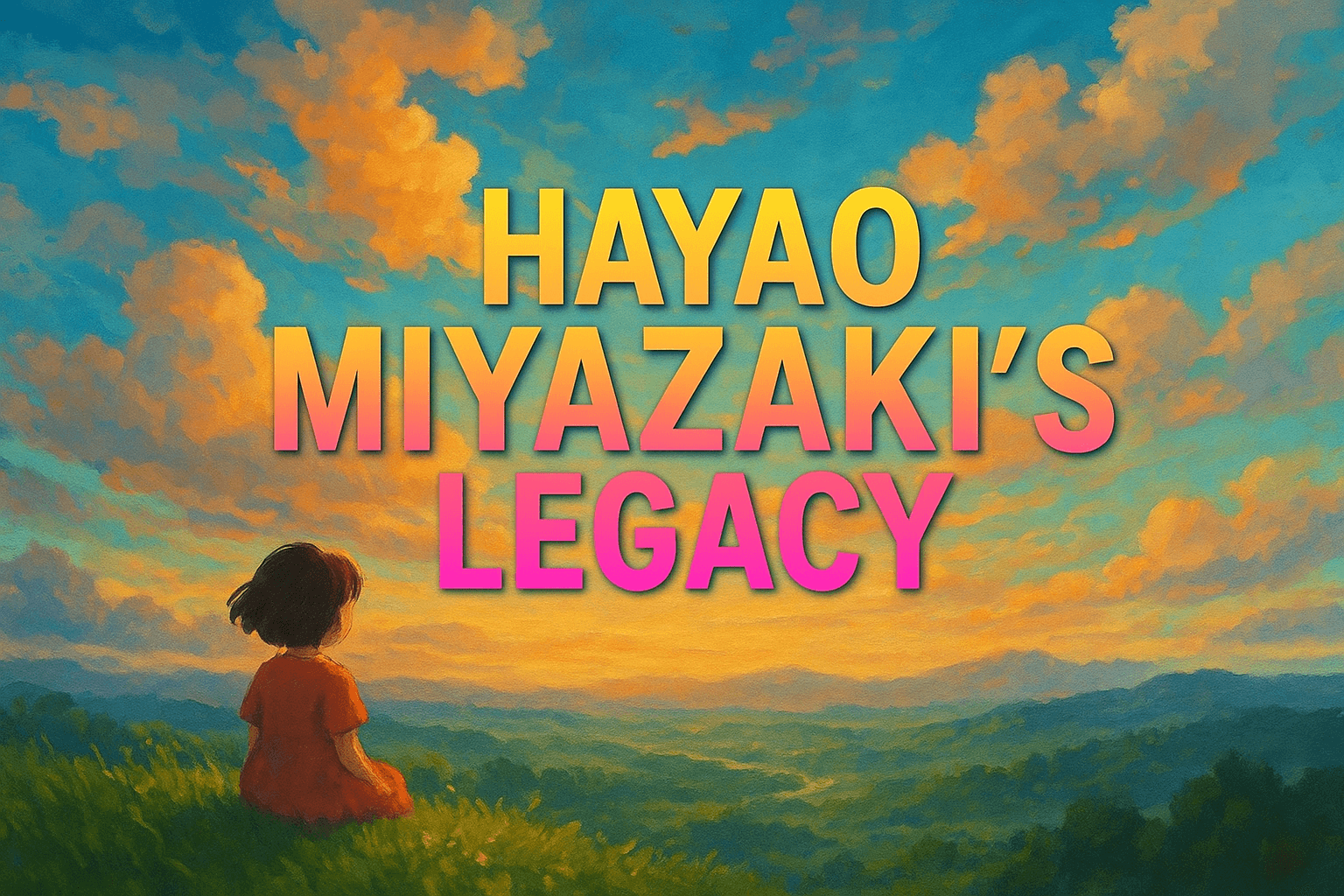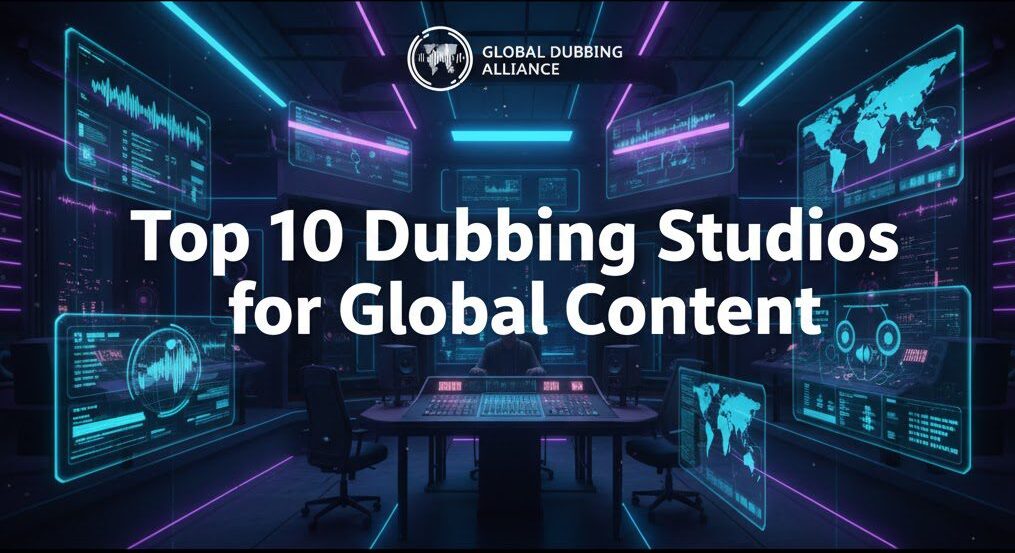Introduction
Are you looking to tap into one of the world’s largest and most diverse entertainment markets? Understanding the landscape of content distribution in India is your first big step. India’s appetite for varied content is growing, offering a massive opportunity for foreign content creators and distributors. This article will guide you through the essentials of licensing and distributing your film or TV show in this dynamic market, helping you navigate the complexities and maximize your reach.
Table of content
- Introduction
- Key-Takeaways
- Understanding the Indian Entertainment Market for Content Distribution in India
- Navigating the Legal and Regulatory Landscape
- Key Distribution Channels in India
- Localization: Connecting with the Indian Audience
- Finding the Right Partners for Distribution in India
- Monetization Models and Financial Considerations
- How Vitrina Powers Your Distribution in India
- Conclusion
- FAQs
Key Takeaways
| Aspect | Key Point |
|---|---|
| Market Understanding | India is a diverse market with strong demand for regional and international content. |
| Legal & Regulatory | Familiarize yourself with Indian censorship laws (CBFC) and intellectual property rights. |
| Distribution Channels | Explore theatrical, broadcast TV, OTT/VOD platforms, and emerging digital avenues. |
| Localization | Dubbing and subtitling in multiple Indian languages are crucial for wider acceptance. |
| Partnerships | Collaborating with local distributors and aggregators can significantly ease market entry. |
| Monetization | Understand various models like licensing fees, revenue sharing, and SVOD/AVOD. |
Want to License Your Content into India?

Understanding the Indian Entertainment Market for Content Distribution in India
The Indian entertainment market is not a single entity but a collection of diverse regional markets, each with its own language and cultural preferences. When planning for distribution in India, it’s vital to recognize this. There’s a huge demand for local content, but also a growing interest in international films and series, especially among urban and younger demographics. The rise of OTT platforms has further accelerated this trend, making foreign content more accessible than ever. Understanding these nuances is key to a successful entry.
- High Internet Penetration: Growing internet access, especially on mobile, fuels content consumption.
- Youth Demographic: A large young population is eager for diverse and global content.
- Regional Strength: Don’t underestimate the power of regional languages and local tastes. Content dubbed or subtitled in Hindi, Tamil, Telugu, Bengali, and Marathi often performs very well.
- Competitive Landscape: The market features major local players like ZEE Entertainment Enterprises and Shemaroo Entertainment, alongside international giants.
| Market Driver | Impact on Foreign Content |
|---|---|
| Affordable Data Plans | Increased streaming of international shows and films. |
| OTT Platform Growth | More avenues for foreign content to be licensed and viewed. |
| Globalization & Exposure | Higher acceptance and demand for diverse genres and storytelling. |
What are the current trends in Indian content consumption?
Indians are consuming more content across more platforms than ever before. Short-form video, web series, and international dramas (especially Korean and Turkish) are seeing significant traction. There’s also a strong preference for content that is either dubbed or subtitled in local languages. Binge-watching culture is prominent, particularly on OTT services. Understanding these consumption patterns is vital for effective distribution in India.
How does regional diversity affect distribution strategies?
Regional diversity is paramount. A one-size-fits-all approach rarely works. For instance, a film that’s a hit in North India might need a different marketing and localization strategy for South India. Your distribution in India plan must consider language, cultural sensibilities, and even local star power if you’re dubbing. Targeting specific states or linguistic groups can yield better results than a broad national campaign for many types of content.
Navigating the Legal and Regulatory Landscape
Before you can get your content to Indian audiences, you need to understand the legal framework. Key considerations for distribution in India include censorship, intellectual property (IP) protection, and contractual agreements. India has specific guidelines for content broadcast on television and exhibited in cinemas, primarily overseen by the Central Board of Film Certification (CBFC). OTT platforms currently operate under a self-regulation model, but government oversight is evolving.
- CBFC Certification: Essential for theatrical releases and television broadcast. Content is rated based on age-appropriateness and themes.
- Intellectual Property: Ensure your copyrights are protected. India is a signatory to major international IP treaties.
- Contractual Clarity: Distribution agreements should clearly define rights, territories, duration, revenue share, and dispute resolution.
- Taxation: Be aware of Goods and Services Tax (GST) and other applicable taxes on licensing and distribution revenues.
| Legal Aspect | Key Consideration |
|---|---|
| Censorship (CBFC) | Content may require cuts or modifications for theatrical/TV release. |
| Copyright Law | Registering copyright in India can offer additional protection. |
| Digital Content Regulation | Stay updated on evolving guidelines for OTT and digital platforms. |
What are the key censorship guidelines in India?
The CBFC guidelines aim to ensure that content is not offensive, does not incite violence or communal disharmony, and is appropriate for different age groups. Themes involving excessive violence, nudity, and politically sensitive topics are often scrutinized. For successful distribution in India, it’s advisable to understand these sensitivities or work with local consultants who can guide you through the certification process.
How are intellectual property rights protected for foreign content?
India has robust copyright laws aligned with international standards like the Berne Convention. Your original creative work is protected upon creation. However, registering your copyright in India can provide stronger legal recourse in case of infringement. Strong contractual agreements with local partners, clearly outlining IP ownership and usage rights, are also crucial for protecting your assets during distribution in India.
Key Distribution Channels in India
India offers a multitude of channels for content distribution in India, each with its own audience and revenue potential. The main avenues include theatrical release, broadcast television (satellite and cable), and the rapidly expanding Over-The-Top (OTT) or Video-On-Demand (VOD) platforms. Some content also finds success through direct-to-digital releases or specialized platforms.
- Theatrical Release: Still a significant window, especially for blockbuster films. Requires CBFC certification and partnerships with cinema chains and local distributors like Tanweer.
- Broadcast Television: A massive reach, particularly for family-oriented content, soaps, and reality shows. Channels often acquire content through licensing deals. Major players include networks associated with IndiaCast.
- OTT/VOD Platforms: The fastest-growing segment. Includes international players (Netflix, Amazon Prime Video, Disney+ Hotstar) and strong local platforms (SonyLIV, ZEE5, Voot). This is a prime channel for diverse foreign content.
- Emerging Channels: Includes inflight entertainment, educational platforms, and direct-to-consumer (D2C) apps.
| Channel | Primary Audience | Content Type Suited |
|---|---|---|
| Theatrical | Mass audience, urban & semi-urban | Big-budget films, event movies |
| Broadcast TV | Families, diverse demographics | Series, dramas, reality shows, kids’ content |
| OTT/VOD | Youth, urban, niche audiences | Web series, international films, documentaries, diverse genres |
Which OTT platforms are dominant in India for foreign content?
While international giants like Netflix, Amazon Prime Video, and Disney+ Hotstar have a significant presence and actively license foreign content, local platforms like SonyLIV, ZEE5 (part of ZEE Entertainment Enterprises), and MX Player also command large user bases and are increasingly open to acquiring international titles. The choice of platform for your distribution in India will depend on your content’s genre, target audience, and localization efforts.
What is the role of traditional TV in the current landscape?
Despite the OTT boom, traditional television remains a powerhouse in India, reaching hundreds of millions of viewers, especially outside metropolitan areas. For content with broad appeal, such as family dramas, animated series, or certain types of unscripted shows like those from World Wrestling Entertainment, TV is an indispensable part of a comprehensive distribution in India strategy. Licensing to TV channels can provide significant revenue and visibility.
Unlock Your Content's Potential in India?

Localization: Connecting with the Indian Audience
Localization is not just about translation; it’s about cultural adaptation. For successful distribution in India, merely providing English content might limit your reach significantly. Dubbing and subtitling into major Indian languages like Hindi, Tamil, Telugu, Bengali, and Marathi can expand your audience exponentially. Cultural nuances in marketing materials and even content edits (where appropriate and legally permissible) can also make a difference.
- Dubbing: High-quality dubbing in multiple languages is often expected, especially for mainstream content.
- Subtitling: A cost-effective alternative or complement to dubbing, particularly for niche content or platforms where users prefer original audio.
- Cultural Adaptation: Consider local sensitivities, humor, and references in your promotional campaigns.
- Marketing Materials: Localize posters, trailers, and social media content for different regions.
| Localization Method | Benefit | Best For |
|---|---|---|
| Dubbing | Wider reach, easier consumption for mass audience | Films, animated content, popular TV series |
| Subtitling | Preserves original audio, cost-effective | Niche films, documentaries, content for multilingual audiences |
| Cultural Consulting | Avoids cultural missteps, enhances relevance | All content being adapted for a new market |
What languages are most important for dubbing or subtitling?
Hindi is the most widely understood language and a primary choice for dubbing. However, for deeper penetration, especially in South India, dubbing or subtitling in Tamil and Telugu is highly recommended. Bengali, Marathi, Malayalam, and Kannada are other significant languages to consider depending on your content and target regions for distribution in India. Market research can help prioritize languages.
How can cultural sensitivities be managed effectively?
Engaging local cultural consultants or working closely with your Indian distribution partner is key. They can review content for elements that might be misinterpreted or considered offensive in India. This is particularly important for themes related to religion, politics, and social customs. Proactive management of cultural sensitivities can prevent backlash and ensure smoother distribution in India.
Finding the Right Partners for Distribution in India
Navigating the Indian market alone can be daunting. Partnering with experienced local distributors, sales agents, or aggregators is often the most effective route for distribution in India. These partners have established networks, understand local market dynamics, and can handle on-ground operations, including regulatory compliance and marketing. Companies like Shemaroo Entertainment have a long history in distributing various forms of content.
- Distributors: Handle theatrical, TV, and sometimes digital distribution.
- Sales Agents: Represent your content to various platforms and buyers.
- Aggregators: Consolidate content from multiple sources for delivery to OTT platforms.
- Co-Producers: Collaborating on content creation can also open up distribution avenues.
| Partner Type | Key Role | Benefit for Foreign Content Owner |
|---|---|---|
| Local Distributor | Secures placement on platforms/screens, manages marketing | Market access, local expertise, established relationships |
| Sales Agent | Finds buyers and negotiates deals | Wider reach to potential licensees |
| Aggregator | Technical delivery and platform liaison | Simplified access to multiple digital platforms |
What qualities to look for in an Indian distribution partner?
Look for a partner with a proven track record, strong industry relationships, transparency in dealings, and a clear understanding of your content type. They should have experience with distribution in India for similar foreign content. Check their network, marketing capabilities, and reporting mechanisms. Due diligence is crucial.
How can I connect with potential distributors and platforms in India?
Industry markets and events (both physical and virtual) are good places to start. Networking, researching online, and leveraging industry directories can also help. Platforms like Vitrina can significantly simplify this process by providing a curated database of distributors, platforms, and buyers, facilitating connections for distribution in India.
Monetization Models and Financial Considerations
Understanding how you’ll make money is fundamental to your distribution in India strategy. Common monetization models include flat licensing fees, revenue sharing (a percentage of earnings from subscriptions or advertising), minimum guarantees, or a hybrid approach. The chosen model will depend on your content’s appeal, the platform, and your negotiating power.
- Licensing Fee: A one-time payment for the rights to distribute your content for a specific period and territory.
- Revenue Share: You receive a percentage of the revenue generated by your content (e.g., from SVOD subscriptions or AVOD ad revenue).
- Minimum Guarantee (MG): An upfront payment from the distributor, which is often recoupable against future revenue shares.
- Advertising-based Video on Demand (AVOD): Content is free to viewers, supported by ads.
- Subscription Video on Demand (SVOD): Content is available to platform subscribers.
| Monetization Model | Risk for Content Owner | Potential Reward |
|---|---|---|
| Flat Licensing Fee | Low (guaranteed payment) | Fixed, may miss out on runaway hits |
| Revenue Share | Higher (depends on content performance) | Potentially higher if content is successful |
| Minimum Guarantee | Moderate (some upfront payment) | Balanced risk and reward |
What are typical licensing terms for foreign content in India?
Terms vary widely based on content type, exclusivity, rights granted (e.g., SVOD, TVOD, TV), duration, and language versions. Exclusivity usually commands higher fees. Typical license durations can range from 1 to 5 years. For successful distribution in India, it’s important to clearly define all terms in your agreement.
How do currency fluctuations and payment terms affect deals?
Deals are often denominated in US dollars or Indian Rupees. Currency fluctuations can impact the final amount received. It’s wise to discuss and agree on the currency of payment and potentially explore hedging mechanisms for large deals. Payment terms (e.g., upfront, phased, upon delivery) should also be clearly stipulated in the contract to ensure smooth financial transactions for your distribution in India.
How Vitrina Powers Your Distribution in India
Navigating the complexities of content distribution in India can be challenging, but Vitrina is here to help. Our platform offers a comprehensive global B2B marketplace for the Media & Entertainment industry. For content owners looking to enter the Indian market, Vitrina provides valuable tools and connections. You can discover and connect with verified local distributors, acquisition executives at leading TV networks and OTT platforms, and service providers for localization and post-production. Vitrina’s Project Tracker can also help you identify content trends and gaps in the Indian market, informing your distribution strategy. By leveraging Vitrina’s solutions, you can streamline your search for partners, access market intelligence, and ultimately enhance your chances of successful distribution in India.
Conclusion
The Indian market offers immense potential for foreign content creators and distributors. By understanding its unique characteristics, navigating the legal landscape, choosing the right channels, localizing effectively, and finding reliable partners, you can unlock significant opportunities for distribution in India. It requires careful planning and a strategic approach, but the rewards can be substantial in this vibrant and growing entertainment economy.
Ready to explore the opportunities for your content in India? Get Your Vitrina Membership today and connect with the partners who can make your Indian distribution a success!
Frequently Asked Questions
The biggest challenge is often effective localization and navigating the diverse regional preferences. While there’s an appetite for foreign content, making it accessible and relatable to a wide Indian audience through quality dubbing/subtitling and culturally aware marketing is key for successful distribution in India.
Marketing is extremely important. With a crowded content landscape, even high-quality foreign content needs a strong marketing push to get noticed. This includes localized trailers, social media campaigns targeting specific demographics, and potentially collaborations with local influencers. Your strategy for distribution in India must allocate resources for marketing.
Yes, Vitrina connects you with a wide range of service providers in the M&E industry, including reputable companies specializing in dubbing, subtitling, and other localization services crucial for distribution in India. You can search, filter, and connect with these vendors directly through our platform.
Action, sci-fi, and horror genres generally do well, especially when dubbed. Korean dramas and Turkish series have gained immense popularity. Animated content for kids also has a strong market. However, with the growth of OTT, there’s increasing space for diverse genres, including documentaries and independent films, as part of a targeted distribution in India strategy.






































